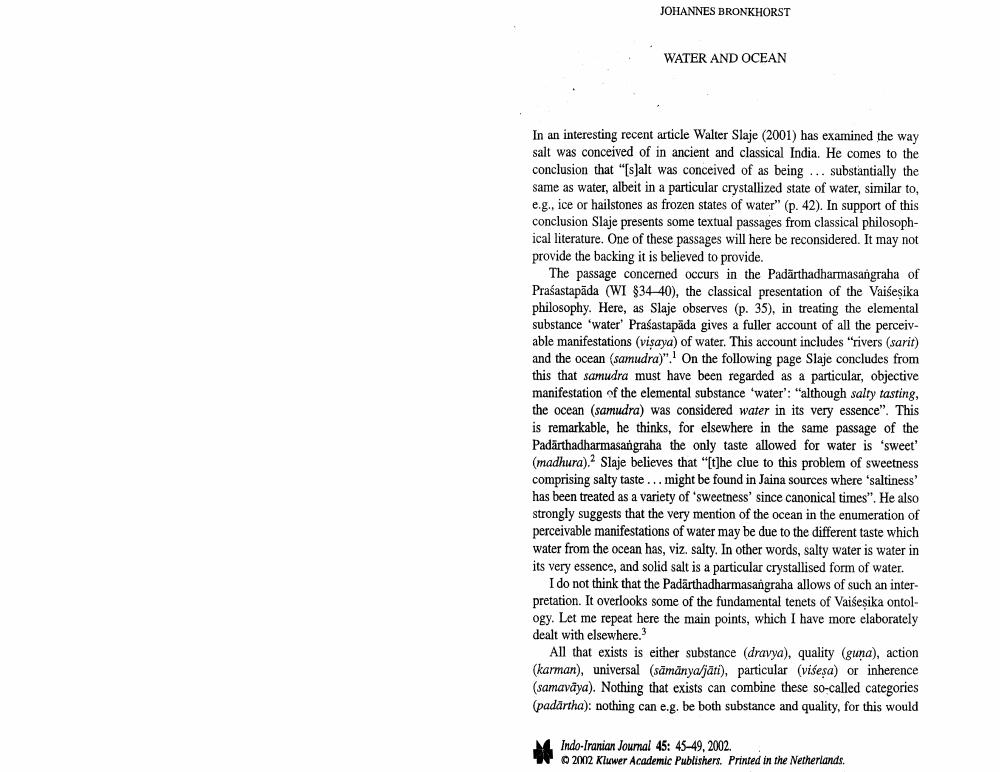________________
JOHANNES BRONKHORST
WATER AND OCEAN
In an interesting recent article Walter Slaje (2001) has examined the way salt was conceived of in ancient and classical India. He comes to the conclusion that "(salt was conceived of as being ... substantially the same as water, albeit in a particular crystallized state of water, similar to. e.g., ice or hailstones as frozen states of water" (p. 42). In support of this conclusion Slaje presents some textual passages from classical philosophical literature. One of these passages will here be reconsidered. It may not provide the backing it is believed to provide.
The passage concerned occurs in the Padārthadharmasangraha of Prasastapäda (WI $34-40), the classical presentation of the Vaišesika philosophy. Here, as Slaje observes (p. 35), in treating the elemental substance 'water' Prasastapāda gives a fuller account of all the perceivable manifestations (visaya) of water. This account includes "rivers (sarit) and the ocean (samudra)". On the following page Slaje concludes from this that samudra must have been regarded as a particular, objective manifestation of the elemental substance 'water": "although salty tasting, the ocean (samudra) was considered water in its very essence". This is remarkable, he thinks, for elsewhere in the same passage of the Padārthadharmasangraha the only taste allowed for water is 'sweet' (madhura). Slaje believes that "[t]he clue to this problem of sweetness comprising salty taste... might be found in Jaina sources where 'saltiness' has been treated as a variety of sweetness' since canonical times". He also strongly suggests that the very mention of the ocean in the enumeration of perceivable manifestations of water may be due to the different taste which water from the ocean has, viz. salty. In other words, salty water is water in its very essence, and solid salt is a particular crystallised form of water.
I do not think that the Padarthadharmasangraha allows of such an interpretation. It overlooks some of the fundamental tenets of Vaišesika ontology. Let me repeat here the main points, which I have more elaborately dealt with elsewhere.
All that exists is either substance (dravya), quality (guna), action (karman), universal (sämänya/jati), particular (višeşa) or inherence (samaväya). Nothing that exists can combine these so-called categories (padartha): nothing can e.g. be both substance and quality, for this would
Indo-Iranian Journal 45: 45-49, 2002.
2002 Kluwer Academic Publishers. Printed in the Netherlands.




